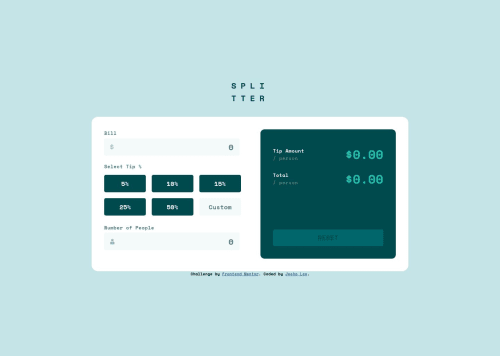Tip Calculator Using Javascript

Solution retrospective
I had specified input validation on my text fields to only allow numbers and backspace/delete to avoid allowing alphabetical characters from being typed, but my approach prohibits copy/paste functions. Additionally, changing the input display to add in decimals also made it so that cursor position was not considered when trying to insert characters. If anyone has any suggestions on how I could allow copy/paste while still validating what is being pasted, or suggestions on how I could tackle the cursor position issue, I'd love to hear it!
Please log in to post a comment
Log in with GitHubCommunity feedback
- @kwngptrl
Wow, this behaves like an ATM machine in my country. I don't know if all ATM machines work this way, you know, the digits get added on from the right.
I probably can't help you with the copy and paste thing, but I just had a quick look-see of your JS and noticed that perhaps you can condense lines 169 through 174 by combining
peopleInput.value === "0" || peopleInput.value ==="".Also, I noticed that punching the values provided in the design by Frontend Mentor, namely, 142.55 for bill, 15% for tip, and 5 for number of people, it shows the expected result of $4.28 and $32.79. However, if I punch 15.00 in the custom field, I get $3.00 and $31.51 respectively. Now, if I use 100 for bill and 1 for number of people and punch the 5, 10, 15, 25, 50 buttons and punch in the same values in the custom field it WORKS PROPERLY, but not when bill is 200 or 300.
I also noticed a slight shifting of the content when the input fields for bill, custom and number of people are focused, but since there is no proper CSS reset included, I could not find the cause in the little time I looked at your solution. Cheers.
Marked as helpful
Join our Discord community
Join thousands of Frontend Mentor community members taking the challenges, sharing resources, helping each other, and chatting about all things front-end!
Join our Discord